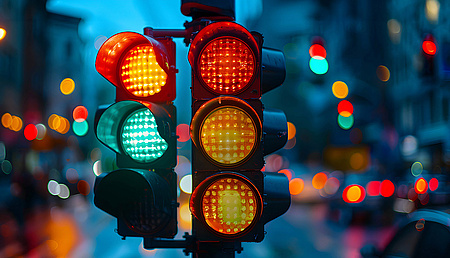
Too much of a good thing: when trademarks die
What do escalator, hovercraft, kerosine, superglue, trampoline and videotape have in common? They all used to be trademarks at one time. Now, we use them without a thought of the companies or inventors who first produced them. These are just a handful of product names that have been, in one way or another, victims of their own success.
Though a trademark is an enduring form of Intellectual Property (IP) when properly maintained, it will whither if neglected or overindulged. So, while it might seem like the pinnacle of brand recognition to have your trademark become synonymous with its subject matter, all-pervasive use comes at a risk to exclusivity rights. Join us as we examine how "genericization" can threaten IP protection and what can be done about it.
When brands turn bland
Genericization, or when a trademark is widely used as a generic term for the product or service it indicates, is the bane of popular brands everywhere. This is because ordinary words and phrases are reserved for common discourse and are therefore not eligible for IP protection. After all, a trademark registration must not impede the ability of the public to express ideas or communicate adequately.
However, just because a trademark has undergone genericization does not mean it is a generic term and thus disqualified from any IP right. It is important to note that many product and service names that appear in dictionaries are still active trademark registrations in at least one jurisdiction.
For this reason, we will distinguish between a genericized trademark — one that is routinely used to refer to a class of goods or services while remaining registered, and a generic mark — one that has lost all IP rights, i.e., that has experienced "genericide." All of the former brand names we mentioned at the start are fully generic marks.
Unlike a trademark registration, genericization is not an easily identifiable or verifiable process as it is dependent on public usage rather than on the ruling of a government agency. Further complicating matters, a name can be generic in one country and trademarked in another since trademark registrations and renewals are pursued on a per-jurisdiction basis. Perhaps the most prominent example of this phenomenon is "Aspirin."
A lingering headache
Scientists at Bayer developed acetylsalicylic acid as a painkiller in the last years of the 19th century, settling on the much more palatable name of "Aspirin" in January 1899. However, during the First World War, the German pharmaceutical company's physical and IP assets were seized in the United States by the newly created Office of the Alien Property Custodian. Following the war's conclusion, the firm was forced to relinquish many of its patents and trademarks to the victor nations as part of the reparation settlement of the Treaty of Versailles. Bayer's trademark for the novel drug "Heroin" was also lost in the same way – proof that some trademarks are best forgotten.

In the United States, any manufacturer can use the word "aspirin" to describe acetylsalicylic acid used as a painkiller. However, a disclaimer of any affiliation with Bayer or its trademarks may appear.
When Bayer eventually bought back its company name in North America for $1 billion USD in 1994, it reclaimed some of its most valuable trademarks, including "Aspirin" in Canada. Unfortunately for the German company, those who had held the rights over the intervening years had not adequately maintained them in the United States and the United Kingdom. So today, you can buy "Aspirin" in Toronto, Canada, but if you cross to the other side of Niagara Falls into Buffalo, New York, it will be aspirin (with a small "a") that stocks the shelves.
Why does it happen?
The circumstances behind each instance of genericization are as individual as the trademarks themselves and can range from a World War to a lack of interest in maintaining a foothold in a particular market. But several conditions apply to most genericized trademarks, namely a lack of pre-existing vocabulary, uncontested market presence and inadequate maintenance efforts on the owner's part.
Innovation that truly breaks new ground is rare and much to be desired, but such novelty comes with its own drawbacks. An invention with no well-established terminology to categorize it easily lends its own, usually trademarked, name to this end. As a result, a mark can become interchangeable with its associated category as a matter of convenience, brevity or familiarity.
This, in turn, feeds into the issue of market domination. A radical new invention faces no immediate competition simply because it is the first of its kind. But if the brand name becomes ubiquitous and stays that way, the consumer base may not separate the trademark from its category, and there would be little practical relevance in doing so. On that account, monopoly status can encourage genericization, but it is by no means an inevitable outcome.

You effectively have to name your invention twice if you come up with an entirely new type of product. Once to describe the product and again to designate your product, your trademark. The fidget spinner is an example of when this second step was not taken in time.
Being as competitive as it is innovative, the consumer electronics sector resists this effect more consistently than others. Take the video game industry in the early 1990s. Emerging from the ashes of the video game crash of 1983, Nintendo found itself standing before virgin territory. A plethora of competing systems had failed to ride out the storm that struck a market saturated with derivative, low-quality products. But this uncontested visibility brought with it the danger of genericide – and after having survived one calamity, the Japanese electronics giant was not willing to fall to another of its own making. And so, very grammatical steps were taken to encourage the use of the neologism "games console" to preserve the exclusivity of the Nintendo trademark. Fast forward to the present, and the fierce rivalry between Nintendo, Microsoft (Xbox) and Sony (PlayStation) guarantees no one product overshadows the others, ensuring the generic term "games console" is here to stay.
Words, words, words
In a curiously recurrent case, adhesive tape has a variety of genericized names across the world: "Scotch Tape" in the United States, "Sellotape" in the United Kingdom and Ireland, "Durex" in Australia and "Tesafilm" in Germany. (Just be aware that "Durex" is a common brand of condoms in the United Kingdom – lest a misunderstanding land you in a sticky situation.)
All of these examples are appropriately registered in their respective countries, so what is it about "pressure-sensitive adhesive tape" that encourages such eclectic names? Perhaps we have already stumbled over the answer. Simply put, it could be that genericized terms are more likely to be used whenever any alternatives are unwieldy or lack a certain harmonious sound.
On top of this, the English language finds it very easy to shift words between parts of speech due to its heavily reduced grammatical inflection. Hence, the proper nouns "Google" and "Hoover" readily produce the verbs "to google" and "to hoover." The latter, meaning "to clean with a vacuum cleaner," is widely used in the United Kingdom even though its origin has been a registered trademark in the country for a century. This plasticity of language, combined with an openness to coined or borrowed words, makes English especially receptive to genericized marks.
How to maintain a unique identity
Of course, a trend toward genericization is not the end of the line for trademark registration, provided steps are taken to stem the tide. For instance, in the United States, "the principal significance of the word must be its indication of the nature or class of an article, rather than an indication of its origin" in order for it to become generic. That is to say, a mark can serve a "dual purpose" of representing a general class and a specific type. So long as the specific type is not a distant afterthought, the mark is still registerable.

Not many companies are "fortunate" enough to contend with the issue of genericization, but it can still affect smaller businesses and individual inventors. Taking appropriate action is even more important for these trademark owners to avoid losing some of their most valuable assets.
We have touched upon some of the strategies trademark owners can employ to prevent the erosion of their trademark's uniqueness and the ultimate loss of exclusive rights. First and foremost, visible action must be taken to stress the distinctive nature of the trademark. As we have seen in Nintendo's case, this can be achieved through direct appeals to the customer and other assertive advertising campaigns. Companies such as Jacuzzi (yes, it is trademarked) use detailed public notices and the appropriate trademark symbol in conjunction with protected names.
It can also be helpful to think of trademark genericization as the inverse of acquired distinctiveness. This occurs when a descriptive or otherwise undistinguished mark becomes widely recognized in connection with goods or services from a specific commercial source. When this happens, the unregistered trademark can possibly be fit for registration. The accepted proofs of this trait, including surveys, advertising material and money spent on promotions, could also demonstrate that a current trademark holder is actively asserting the exclusive nature of their mark.
Ultimately, even the hottest new invention becomes old hat one day, but its name can leave a lasting impression on the public consciousness. The trademark experts at Dennemeyer help you preserve the lifelong value of this remarkable form of IP.
Filed in

Slight variations in evidence can lead to vastly different outcomes in disputes — and prior decisions cannot be relied on as indicators of success.



